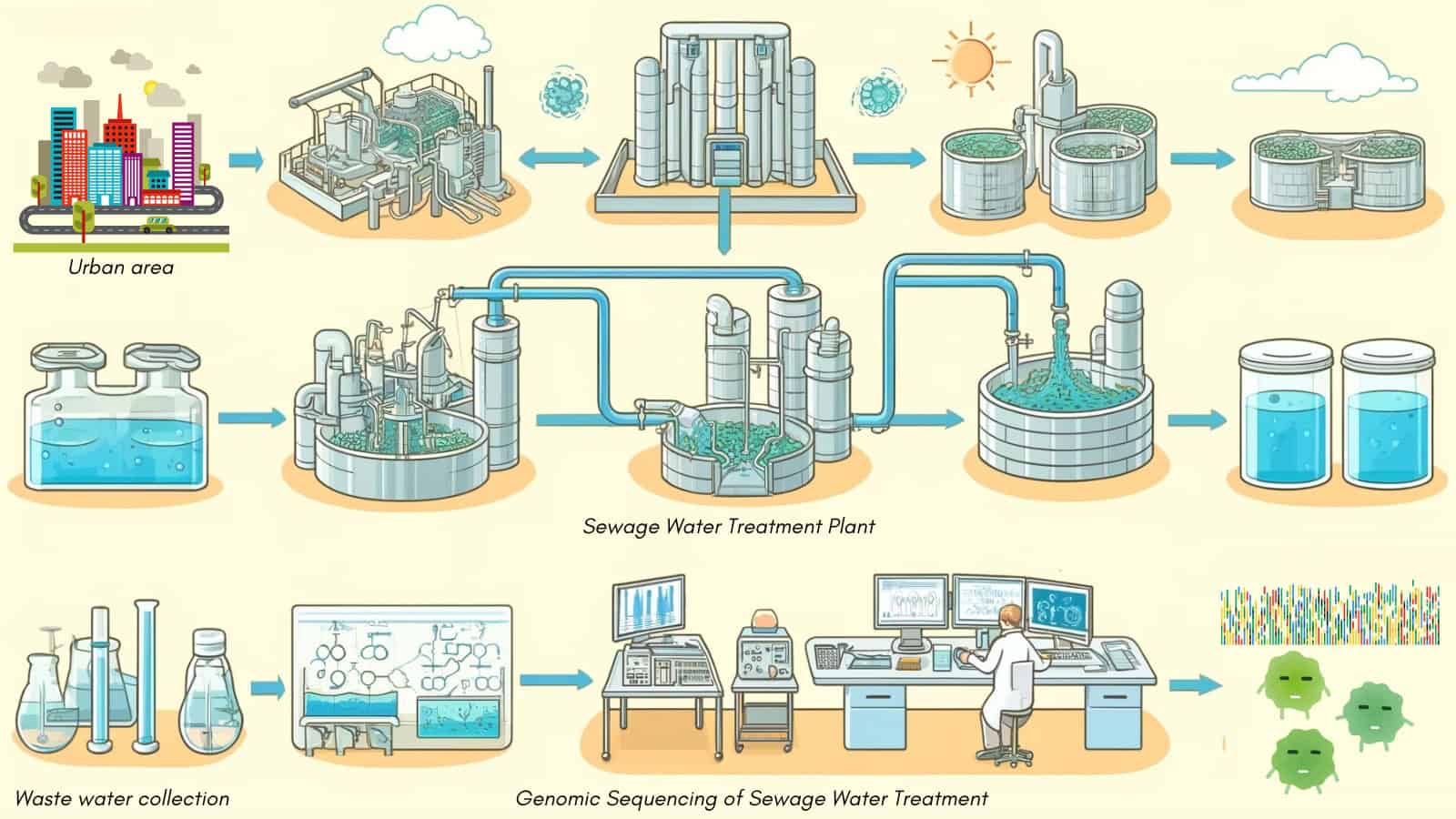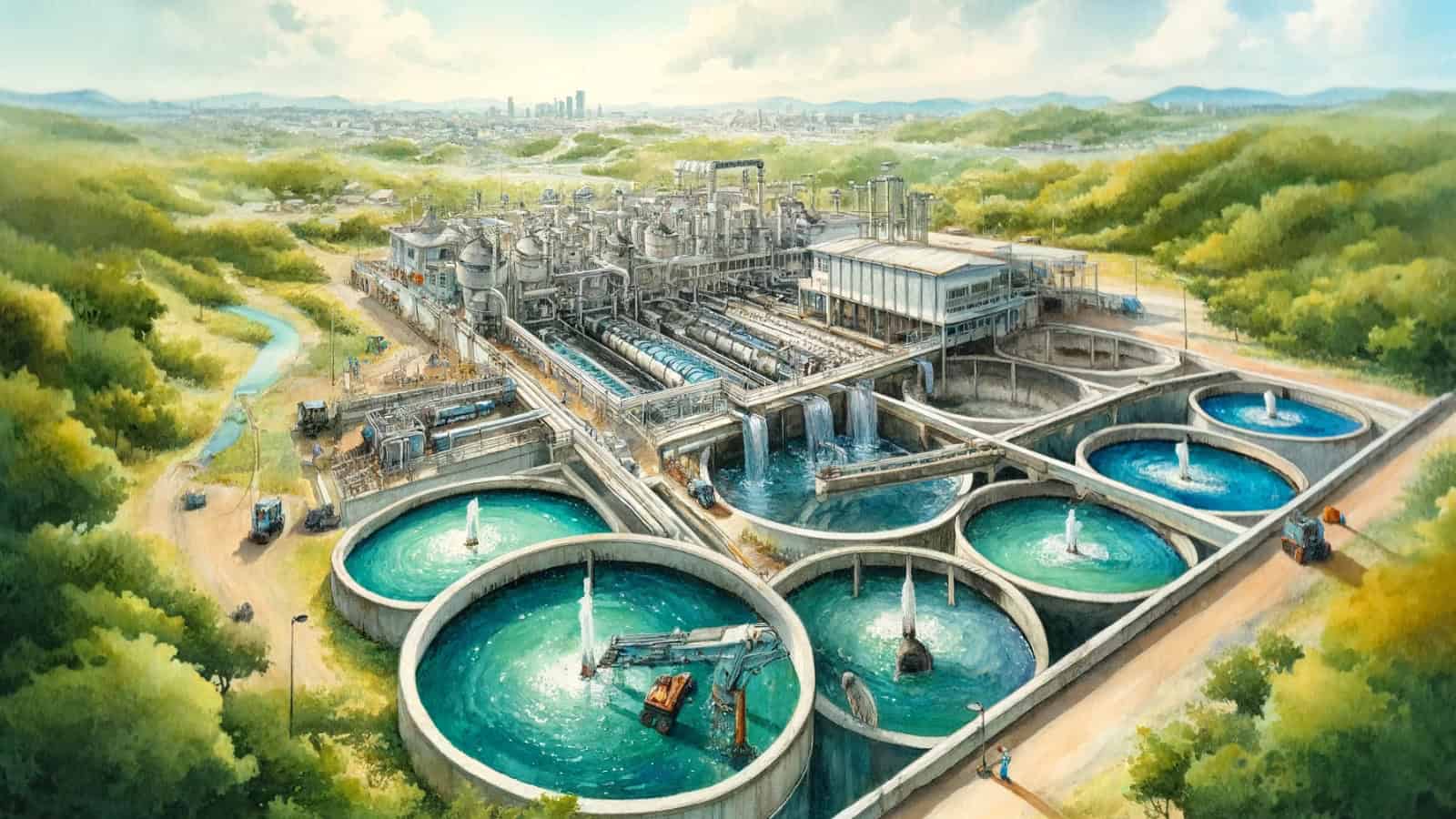Sewage water, a crucial but often overlooked part of our urban ecosystems, is not just water disappearing down our drains. The germs and bacteria found in untreated wastewater, including those native to the human body and harmful ones that cause sickness, pose a significant threat to the health and well-being of our communities, particularly sanitation workers and the inhabitants of the surrounding environment. Cities worldwide are using Sewage Treatment Plants for the safe disposal of waste from various settings (homes, industries, hospitals, etc.) and to aid public health measures. Proper treatment of wastewater can also transform it into a valuable source of water that can be utilised for agriculture and irrigation, recharging groundwater, supporting industrial processes, and contributing to environmental sustainability.
Given the high population density, poor sanitation infrastructure, and burden of infectious diseases in our country, there is an urgent need to strengthen and reimagine our wastewater management systems. Advanced monitoring and analysis of such plants can turn wastewater into a crucial sentinel within our urban ecosystems, offering early warnings about public health threats, insights into collective habits, and even the effectiveness of pharmaceutical interventions. Engaging more actively with wastewater surveillance methods, such as genomics surveillance, can help us safeguard and enhance public health and environmental well-being, thus ensuring a sustainable future for India.
The important role of genomic surveillance of wastewater was exemplified during the COVID-19 pandemic, highlighting the effectiveness of this method in monitoring the spread of the virus. It is now recognized as a tool for assessing the impact of infectious pathogens within communities and addressing disease dynamics from a ‘One-Health’ perspective by identifying potential sources and mechanisms of transmission.

Figure 1: Wastewater surveillance to understand the microbial dynamics in sewage water. Parts of this image were generated using AI.
In the last few years, there have been a series of research studies in India looking at wastewater to understand the Antimicrobial-Resistant (AMR) pathogens in wastewater. A notable 2022 study by the National Centre for Cell Science in Pune utilised wastewater surveillance to map the Indian sewage microbiome across 21 states. They uncovered a predominance of human gut-associated bacteria like Proteobacteria, Bacteroidetes, and Firmicutes in wastewater. This research also showed the presence of multiple antibiotic-resistance genes (ARGs) that were known to be resistant to critical antibiotics, such as aminoglycosides, beta-lactams, fluoroquinolones, and macrolides. ARGs are genetic elements found in bacteria that help them naturally withstand antibiotics by evolving defense mechanisms. However, the occurrence of ARGs is accelerated by rampant antibiotic use and misuse, and these genetic elements quickly spread across bacterial communities. Infections caused by ARG-containing bacteria or superbugs are much more challenging to treat.
Several other studies have also highlighted this concerning the rise of ARGs in wastewater. For instance, a research study conducted in the main drain of Sewage Treatment Plants in Hyderabad discovered ARGs resistant to aminoglycosides, trimethoprim, as well as antibiotic-resistant Pseudomonas and Acinetobacter.
Another investigation spanning four urban cities in India found pathogenic bacteria exhibiting resistance across seven classes of antibiotics. The latest findings from the Tata Institute for Genetics and Society (TIGS) give us a glimpse into 26 Sewage Treatment Plants in urban Bengaluru. They showed similar findings to those observed in the Pune study, with additional insights on sewage water treatment protocols.

Figure 2: Bacteria have the special ability to transfer their genes to a neighbouring bacterial cell without reproduction. This process is called bacterial conjugation or horizontal gene transfer. This process is responsible for the quick transfer of ARG (antibiotic-resistant gene) in a bacterial population (Adapted from Bioninja).
This study uniquely focused on understanding how the Sewage Treatment Plant procedures impacted the microbial populations in wastewater. The researchers compared the inlet and outlet waters of the Sewage Treatment Plants in terms of the microbes and ARGs present. They found that the treatment procedures effectively reduced the water’s antibiotic content and overall bacterial and ARG counts. However, not all microbes die after the water treatment procedures in the Sewage Treatment Plants, nor are the ARGs completely removed.
The researchers of the study noted that before treatment, the water samples were rich in human gut bacteria, such as Firmicutes, Actinobacteriota, Proteobacteria, and Patescibacteria. Post-treatment, Firmicutes were notably reduced, giving way to increased populations of Proteobacteria and Patescibacteria. Some pathogenic bacteria, like Acinetobacter, Aeromonas, and Pseudomonas, persisted despite treatment at various stages.
“The findings of these surveillance studies highlight the dual role of Sewage Treatment Plants, not only in helping reduce pathogenic bacteria and ARGs but also as potential incubators for new antibiotic-resistant strains of pathogens. This revelation points to the urgent need for continuous monitoring and the development of more effective management strategies to mitigate the impacts of these resistant microbes on human health and the environment. The fact that treated wastewater is used in various downstream activities such as agriculture and groundwater recharge only emphasises the need for immediate and effective action.”
As we confront AMR, the most significant health challenge of this century, surveillance of Sewage Treatment Plants can play a pivotal role in effectively reducing the presence of harmful pathogens and AMR in sewage water. This method must be employed not just by research laboratories but also more widely by the government, hospitals, and the private sector to inspire a revolution towards better-informed water management strategies. It is also crucial to assess and refine current water treatment protocols, as the effects will be seen encompassing health, agriculture, industry, and environmental restoration, paving the way for a healthier future for all.
